Mie Prefecture in eastern Kansai has over 1,000 kilometres of coastline, including Ise-Shima National Park. In Japan, it is known as the birthplace of Shintoism and attracts many inbound visitors. In its breathtaking landscapes, some of the locals make a living from fishing, especially for products popular in the rest of the country, such as the Ise lobster. Visiting Ise-Shima is an opportunity to discover this so-called gourmet paradise and live authentic experiences by meeting the locals.
- Hachiman-kamado Ama Divers Hut
- Kirigaki Observatory
- The Shiojitei International Hotel in Toba
- Lobster Fishing
Hachiman-Kamado Ama Divers Hut
The word ama (海女) is the combination of two kanji, the first one meaning “sea” (海) and the second meaning “woman” (女). These “sea women” are divers known to free dive off the coasts of Japan for thousands of years. But there are fewer and fewer ama now. According to the most recent poll, a decade or so ago, there were 2,000 across the country, with about half of them around the towns of Toba and Shima. Toba is where the Hachiman-Kamado divers hut is located, and this is where I am taking you for a visit.
Who Are the Ama Divers?
It may be not easy to distinguish legend from reality among all the information you find about the ama divers of Japan. But, one thing is certain — these mysterious divers have been a great inspiration for artists over the past centuries. In particular, they are found in many Japanese prints from the 18th and 19th centuries. You may have seen them before, wearing a loincloth tied around the waist, and carrying a basket full of abalones or other shells.
As Toba is also known for pearl farming, the ama are often wrongly associated with pearl fishing. But, as my ama host would tell me, their mission is primarily to dive to the seabed for food. Through their heritage, the ama are not only passing on unique free diving techniques, but they are also passing on a philosophy and a way of life that is particularly respectful of the environment.
Enjoy the Company of the Ama with a Seafood Meal
After a hard day’s work, the ama rest in their huts, where they warm themselves in front of a fire. In these huts, they also prepare their sea trips and change their clothes. There are two Ama huts that welcome tourists in the southeast of Toba. I went to one of them by car, accompanied by two people. If you don’t drive, the ama will arrange for you to be picked up, and brought back later at Toba station, 25 minutes away. You won’t have any trouble recognising the bus: it is navy blue, covered with paintings of ama in their white suits.
As soon as I arrived in the parking lot, a woman came to greet me. It was diver Reiko-san, dean of the cabin. As I was a bit early, she took the opportunity to chat with me a little. She had just celebrated her 90th birthday this month! She told me that she started fishing at 13 and continued to dive, even in her 80s.
Then it was officially time for my two friends and me to go to the hut. Our host, Okano-san, was waiting for us, waving a small French flag, wearing a smile that we could easily see behind her mask. She presented us with the basket of seafood that she had caught earlier and that we were going to taste together.
The hut offers several menu items ranging from a simple snack to a deluxe meal. I had chosen the snack option. Okano-san first introduced us to the contents of the basket: turbos (shellfish), hiougi scallops, abalone, and horse mackerel. She explained that the exact contents could vary a little from one day to the next depending on what they were able to catch.
She invited us to sit on cushions around the fire in the centre of the room. I loved the simple and warm atmosphere of this moment. I listened to my host’s stories about her life as an ama while watching the shellfish simmer on the fire. She told us that eating seafood in this way was the most natural way to eat. She had gone out to catch the shellfish by hand that morning, and now she was cooking them over a wood fire, in the most natural way indeed.
Sharing a moment in the lives of women divers
The conversation continued while we enjoyed the shellfish of such delicate taste and surprisingly sweet for some! Beyond this visit’s tourist and culinary experience, I really enjoyed this special moment with Okano-san. I felt a lot of modesty in her words. Listening to her, it seemed almost as if it was easy to dive 10 metres deep without an oxygen tank. However, she also explained that it was tough to become an ama. According to her, not only the physical difficulty discourages the younger generation from taking over. Many conditions must be fulfilled to practice the art of the ama, the first of which is to belong to a family with the right to fish.
I asked her why the ama were exclusively women. She answered that according to ancient beliefs, women’s bodies were more resistant to cold than men’s. However, she realised that this answer didn’t fully convince me. So, she added with a laugh that it was feared that some of their parts would shrink too much and disappear.
After the meal, she suggested that I try on the ama outfit, the one they all wore. It consisted of a long blouse, a white cotton bonnet tied on the head and a long skirt made of kurume-kasuri (a traditional indigo-dyed Japanese cotton fabric). Okano-san told me that she now dives in a neoprene wetsuit, but she used to wear the traditional outfit when she was younger.
After our little photo session, the other three ama came to join us. They taught us how to dance the Osatsu Ondo, a folk dance from this part of Toba. Then we danced together to end this incredible experience.
Kirigaki Observatory
After leaving the ama, I headed to the Kirigaki Observatory to watch another show. As the observatory’s terrace faces west, it is said to have the most beautiful sunset in the area. It lies south of Shima and offers a magnificent view of Ago Bay, also known as Pearl Bay. From the top of the observatory, you can see the bay dotted with many small islands and pearl oyster beds. Pearl farming is also an essential activity in the region. It developed in the early 1890s on the initiative of an entrepreneur named Mikimoto Kōkichi, who was the first in the world to develop an efficient method of pearl farming. Today Mikimoto pearls are very popular worldwide and are the pride of the region, so you will surely come across this name many times on this trip.
Unwind and Recharge at the Shiojitei International Hotel in Toba
As night fell, I was looking forward to ending the day at the Shiojitei International Hotel, north of Toba. It is a beautiful modern ryokan on Ise Bay, where it is good to relax and enjoy the region’s pleasures. Indeed, within Shiojitei, Ise-Shima’s reputation as a “gourmet paradise” is proved right.
You can enjoy the finest local specialities such as Ise-ebi (Ise lobster) or Matsusaka beef (one of the top three beef brands in Japan). Dinner is served in the restaurant where the cook prepares lobster, beef, vegetables and shellfish teppanyaki-style in front of you. Breakfast is also a unique experience. It is served in small private rooms where you will be brought many small dishes of vegetables and fish, along with miso soup, rice and the most melting piece of Matsusaka beef. Unlike dinner, the ingredients are steamed or simmered.
Shiojitei is not just about delicious food. The hotel also has thermal baths unlike any other, which feels wonderful to soak in after a long day. The two rotenburo (outdoor baths) sparkle like pearls. These “pearl aurora” baths were developed for Shiojitei by Mikimoto Cosmetics, which develops and sells cosmetics containing extract of the pearl. The calmness of the place allows you to relax deeply, listening to the trickling of the water and the distant sound of the waves.
In the early morning, you can enjoy the fresh air on the terrace while watching the sunrise over Ise Bay. The rooms are decorated with Ise-katagami, a form of local handicraft unique to Mie that allows guests to immerse themselves in the region’s craft culture. You can also access the waterfront terrace and enjoy the view and quiet.
Lobster Fishing
If you are interested, you can watch the fishers of the Wagu port coming back from lobster fishing in the early morning. Personally, I always like to make a link between the specialities I discover while travelling and the people who produce them. So I got up in the early morning that day to reach the port around 6:00. When I arrived, fifty people were waiting for a small boat to bring back the fishers and their catch. The lobster being nocturnal, the fishers leave to lay their nets during the evening and return in the early morning.
When the boat returned, a few men would pull out the nets to bring them to the harbour, where men and women, all with a small hook, began to untangle the trapped lobster. It is meticulous work because if the slightest leg is stuck in the net, the price of the lobster will drastically drop. Everyone was talking and laughing in a relaxed and pleasant atmosphere! Further on, the lobster were sorted by size to fix the prices and send them immediately to the market. The cost of lobster is fairly stable, around 150,000 yen per 30kg. But around New Years, it goes up to 5,000 yen per kilogram, when the hard-working fishers get the best deals.
When I asked one of the fishermen how long he had been working here, he first laughed! And then he told me that here everyone has been working forever. In fact, everyone is from the same family, the Oyama family. From what the fisherman explained, many of the people present were volunteers simply taking part in the family business. With fishing being the main activity here, I wondered how many families like the Oyama worked like this and made a living from fishing half the year. The dinner I had enjoyed the day before took on a whole new dimension!
Access Information
You can get to Toba from Osaka, Kyoto and Nagoya by taking a Kintetsu Line train to Toba Station. Allow around 2.5 hours by train from Osaka and Kyoto, and 1 hour and 20 minutes from Nagoya.
Hachiman-kamado Divers Hut
From Toba station, allow 25 minutes for the journey by car or on the ama shuttle. Book your experience at least 2 days in advance. The ama only speak Japanese, so if you wish to be accompanied by an interpreter, mention this in your reservation. A French or English speaking interpreter will come with you for an additional cost of 1000 yen per person.
Visit the official Amakoya (Ama divers hut) website for more information and to make a reservation.
 Ama Hut
Ama Hut
RESTAURANT- 819 Osatsucho, Toba, Mie 517-0032, Japan
- ★★★★☆
 桐垣展望台
桐垣展望台
POINT OF INTEREST- 7RQQ+22, Shima, Mie, Japan
- ★★★★☆
 Shioji-tei
Shioji-tei
LODGING- Japan, 〒517-0011 Mie, Toba, 1 Chome−23−1 潮路亭
- ★★★★☆
 Wagu Fishing Port
Wagu Fishing Port
POINT OF INTEREST- Shimacho Wagu, Shima, Mie 517-0703, Japan
- ★★★☆☆
Wagu Fishing Port
Accessible only by car and only from October to April. Fishermen usually return around 6:00 a.m. but this can vary and is not an exact time. The public is allowed to visit the port freely, respecting the work of the fishermen.
For me, this trip was a real experience for the senses, and an opportunity to meet unforgettable people. Mie prefecture has an infinite number of beautiful places worth visiting, but this itinerary away from the crowds allows you to visit Ise-Shima in an original way through the lens of fishing. This can be an opportunity to make a more peaceful stopover during your trip to Japan and to take time to discover an authentic and rural Japan.
Article written in partnership with Mie Prefecture
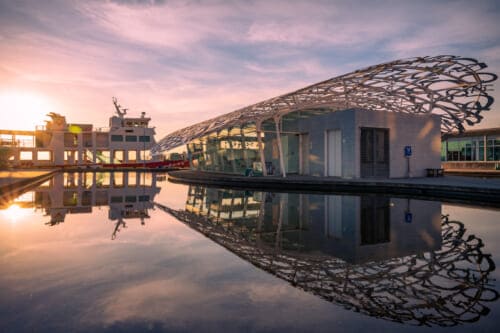
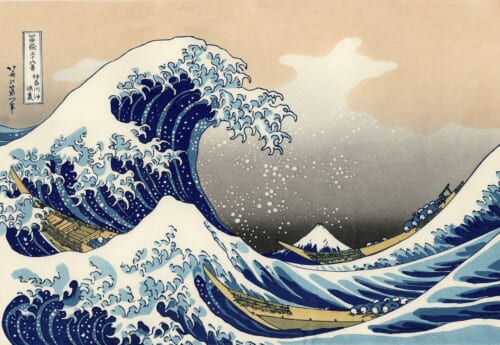
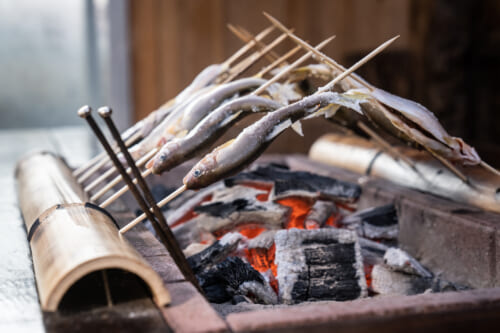
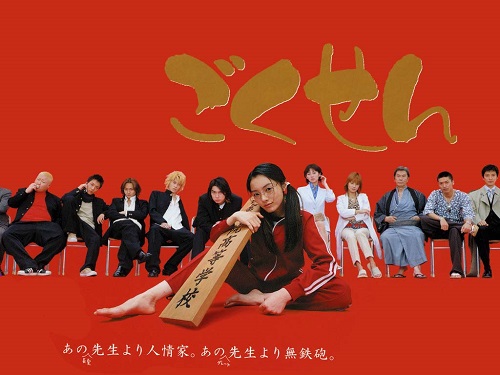
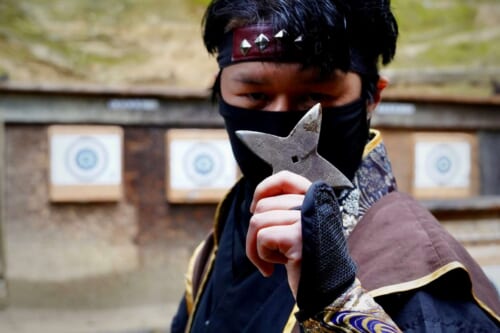
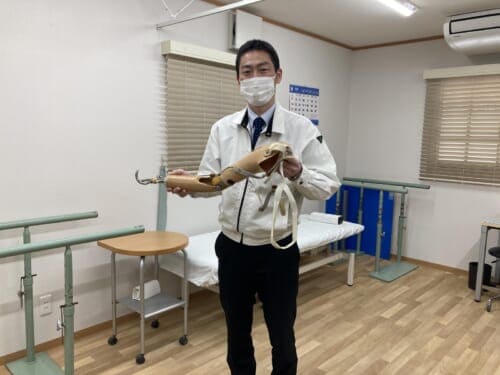
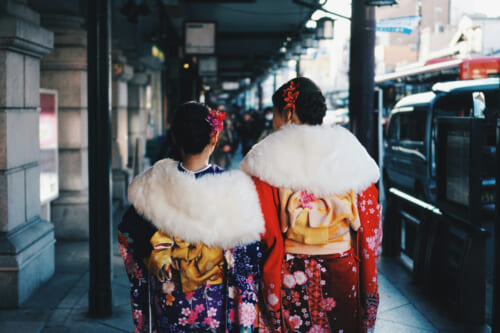


No Comments yet!